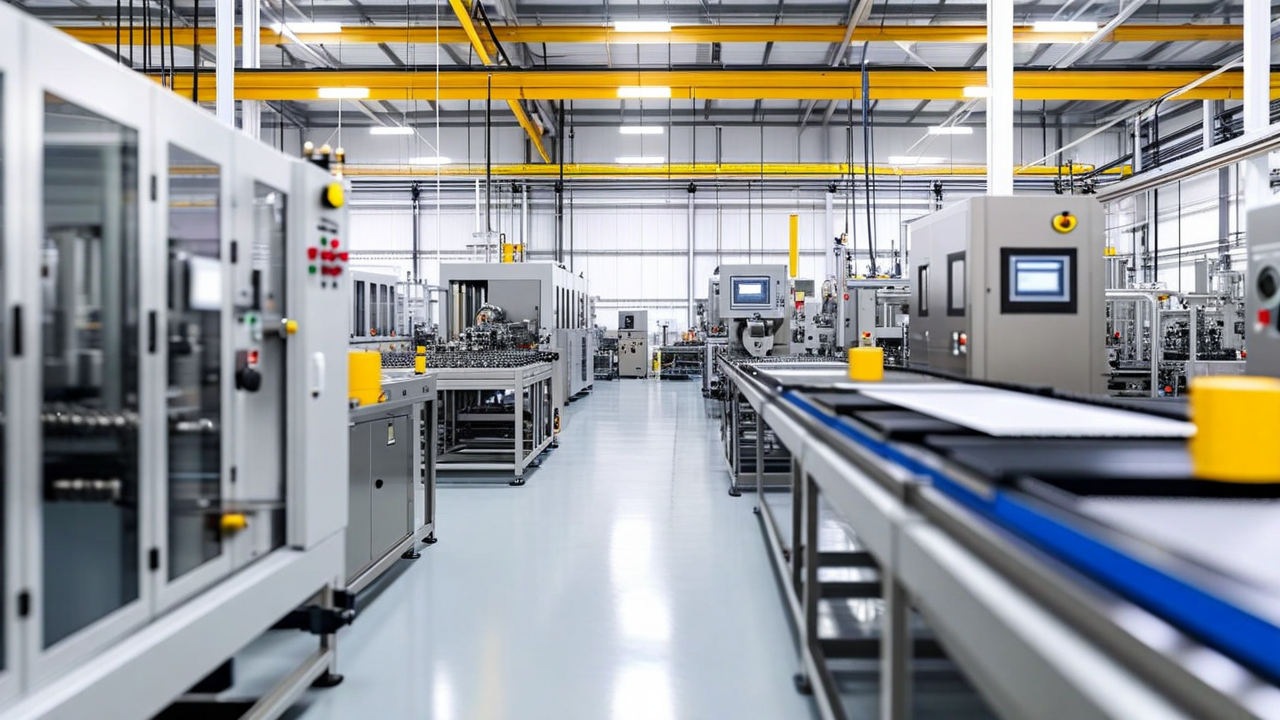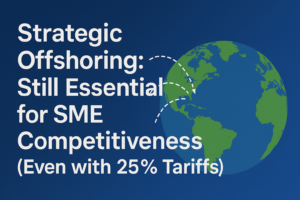
Manufacturing leaders often struggle to cut costs while keeping quality high. The good news is that it’s possible to do both – and it’s crucial for staying competitive. The key is taking a smart approach that combines proven methods like lean manufacturing with new technology and data-driven insights. By cutting waste, improving how things work, and using tools like predictive maintenance and just-in-time inventory, manufacturers can spend less without sacrificing quality.
Take lean manufacturing, for example. It helps spot and eliminate waste like making too much product or keeping too much inventory – things that drive up costs. Using tools like vibration sensors and heat cameras to check equipment health also helps. These tools catch problems early, which means less downtime and longer-lasting equipment, helping maintain consistent quality.
The Cost-Quality Conundrum: Why Traditional Approaches Fall Short
Small and medium-sized manufacturers often struggle to balance cost reduction with quality. Common solutions like reducing staff or buying cheaper materials usually harm product quality, which can damage customer relationships and hurt the company’s reputation. This creates a difficult situation for businesses trying to stay competitive when markets are uncertain.
Finding the right balance between costs and quality without hurting day-to-day operations is tough. Many smaller companies don’t have enough money to make big changes to save costs, which leaves them exposed when material prices go up or supply chains break down. But there’s good news – offshore manufacturing offers a new solution. Working with specialized offshore partners lets companies make products more affordably while keeping quality standards high, creating better outcomes for everyone.
Step-by-Step Framework for Strategic Cost Reduction
Cutting costs while keeping quality high needs a clear plan that uses proven methods and new technology. Here’s a practical guide for manufacturing leaders:
- Identify Areas for Cost Reduction
Start by taking a close look at how your operations work to find waste. Using lean manufacturing helps spot and remove problems like making too much product, unnecessary movement, and keeping too much inventory. For example, using just-in-time inventory not only saves storage costs but also reduces the chance of having outdated stock. - Adopt Advanced Automation and Predictive Maintenance
Tools like robots and manufacturing software help speed up repeated tasks, reduce mistakes, and make production faster. Using predictive maintenance with tools like vibration sensors and heat cameras helps spot equipment problems early, which means less downtime and longer-lasting machinery. These tools help keep operations running smoothly while maintaining product quality. - Leverage Offshore Manufacturing Partnerships
Working with offshore manufacturers gives you access to cost-effective production without losing quality. When you outsource tasks that aren’t central to your business, you can focus on what you do best while getting the benefits of your partners’ expertise and size advantages. - Utilize Real-Time Data Analytics and KPIs
Tracking important measurements like Overall Equipment Effectiveness (OEE) and First Pass Yield (FPY) shows you how well your operations are performing. Using real-time data helps you make better decisions and ensures your cost-saving efforts don’t hurt quality.
Using this framework helps manufacturers save money while keeping or even improving product quality, leading to lasting success.
Case Studies: Real-World Success Stories
Real companies have put cost reduction strategies into practice and seen clear results. Here are three examples that show how new approaches to manufacturing can work in the real world.
Wilson Perumal & Company: Supply Chain Transformation
A consumer goods company in the Middle East struggled with high supply chain costs that took up over 18% of revenue, along with too much inventory. Working with Wilson Perumal & Company (WP&C), they created a step-by-step plan to fix these issues. They focused on matching supply chain operations with business goals, cutting down on overtime and rush shipping fees, and better managing inventory. Within three years, they brought costs down while keeping operations running smoothly.
Predictive Maintenance in Action
Better ways to maintain equipment are helping manufacturers spend less time and money on repairs. Tools like vibration sensors and heat cameras can spot problems before they cause breakdowns, letting companies fix issues early. This smart approach helps equipment last longer and keeps production quality steady, saving money in two ways.
Generative AI for Defect Detection
BMW shows how new technology can improve manufacturing by using AI in their battery pack assembly. They created a digital copy of their assembly line, which helped them reduce alignment problems by 30% and make production more efficient. This shows how new technology can improve quality control and reduce costs.
These examples show that with the right tools and methods, manufacturers can lower costs while keeping quality high, helping them grow and stay competitive.
Measuring Success: Key Quality Metrics for Optimization
Measuring the right metrics helps make sure cost cuts don’t hurt quality. Three key measurements give valuable insights into how well manufacturing is working: Overall Equipment Effectiveness (OEE), First Pass Yield (FPY), and Scrap Rate. OEE shows how well equipment is running by looking at if it’s available, performing well, and making quality products. FPY tells you how many products are made correctly the first time, which helps reduce fixing mistakes. Scrap Rate shows how much material is wasted, making it easier to spot where resources could be used better.
Enterprise Resource Planning (ERP) systems help track and improve these measurements. By collecting real-time data from production lines, ERP systems provide useful insights, make work smoother, and help with making better decisions. For example, when you track FPY through an ERP system, you can find where processes aren’t working well and make targeted improvements to boost quality while lowering costs.
Strategic Offshore Manufacturing: A Win-Win for Cost and Quality
Offshore manufacturing can transform how your business operates. With a well-planned approach, companies can lower costs while keeping or improving their product quality. Working with offshore partners gives you access to expert knowledge, modern technology, and cost savings that many small and mid-sized companies can’t achieve on their own.
Want to reduce costs while maintaining quality? REDUx Engineering helps manufacturers handle the complexities of offshore production. We work with you to improve operations, build better supply chains, and maintain high quality standards—helping you stay ahead in a competitive market. Learn how our solutions can help your business grow.






